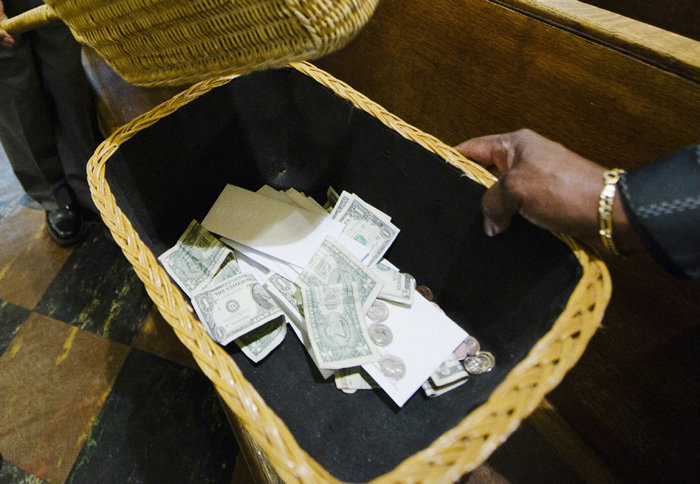Many Pastors See Bump in 2018 Giving but Black Pastors More Likely to Report Decline, Study Says

While some 42 percent of pastors in general are reporting a bump in giving to their churches over 2017, an equal amount of African American pastors say giving has gone down for them over the same period, a new survey from Lifeway Research says.
"The increases in offerings so many churches are experiencing coincide with what most economists refer to as 'full employment,' as well as increased wage growth in 2018," Scott McConnell, executive director of LifeWay Research said in a recent statement. "Inflation has allowed Social Security recipients—likely some of the most faithful donors in many churches—to receive cost of living increases above 2 percent for two years in a row."
According to the study, which surveyed a random sample of 1,000 Protestant pastors from Aug. 29 to Sept. 11, 2018, about 8 in 10 Protestant pastors, 79 percent, reported that total offerings at their church this year are at or above last year's levels. Only about 15 percent of pastors reported that giving was down.
When those general numbers were broken down by factors such as church size, the pastor's race, and denomination, a different picture emerged.
Pastors of churches attracting 100 or more attendees were more likely to say their 2018 offerings are ahead of 2017, 49 percent, than smaller churches where only 36 percent reported boosted giving.
Some 29 percent of white pastors reported that offerings were "higher than budgeted" while only 14 percent of African-American pastors selected that option. African-American pastors, 42 percent, were the most likely to report that their offerings are below last year.
Baptists, 39 percent, and Pentecostals, 40 percent, were more likely to report "Higher than budgeted" offerings than Lutherans, 21 percent, Methodists, 16 percent, and Presbyterian/Reformed, 21 percent.
While it wasn't immediately clear why a significant number of black pastors reported lower giving compared to 2017 and Lifeway researchers were not immediately available to discuss the results of their survey, a recent report from the Economic Policy Institute suggests one reason may be due to the slower economic recovery being experienced by minorities when compared to whites.
While there have been nationwide improvements in employment for black and Hispanic workers, their unemployment rates remain high relative to white workers in every state.
The highest African American unemployment rate was in the District of Columbia, 12.4 percent, among the states for which data was available. Illinois followed closely behind with 9.3 percent; Louisiana, 8.5 percent; Alabama, 7.1 percent, and New York was at 7 percent.
Meanwhile, the highest white state unemployment rate is 5 percent, in West Virginia, while the lowest 1.2 percent was registered in Hawaii.
Nationally, in the third quarter of 2018, African American workers had the highest unemployment rate at 6.3 percent, followed by Hispanic workers, 4.5 percent, whites at 3.2 percent, and Asian workers at 3.0 percent.
Lifeway also reported that the increase in giving has positively impacted pastors' perceptions of the economy in general. Researchers at the organization said that for the first time since they began asking pastors economic questions in 2009, more pastors now say the economy is having a positive rather than a negative impact on their church.
Some 45 percent of pastors reported that the economy is benefiting their church, while 35 percent said it was having no impact.
"Most trackable forces in the economy have been positive for several years. Pastors' perceptions are finally catching up to the economic reality," McConnell said.





























